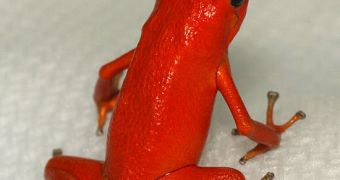Researchers are currently investigating an interesting lead that may help explain why 40 percent of the world's amphibian species declined over the past 30 years alone. Some believe that a fungal infection may have been responsible for that, and a study to test this hypothesis is currently ongoing.
In order to keep track of the potential infection spread, experts are analyzing specimens of amphibians that are stored in museum jars. If they manage to find sufficient connections between the dead individuals, their species' decline and fungi, then they could establish the existence of an infection.
Preliminary investigations revealed that the animals may have been killed off by a microorganism called Batrachochytrium dendrobatidis (Bd). DNA samples collected from dead toads, frogs and salamanders in Central America revealed a clear pattern.
All of these creatures died in their habitats as soon as Bd made its way into those environments. What experts are trying to determine now is whether that was the case at a global scale. Thus far, studies were conducted in Costa Rica, Guatemala and Mexico, among other countries.
A scientific paper published in the latest issue of the esteemed journal Proceedings of the National Academy of Sciences (PNAS) reveals that a Bd infection most likely originated in southern Mexico in the early 1970s.
The work was conducted by San Francisco State University (SFSU) biology graduate student Tina Cheng and her colleagues. The team explains that the infection moved southwards in the 80s and 90s, reaching western Guatemala as it did so.
No later than 1987, Bd also made its way to Costa Rica, the experts say. They add that droughts, shifting precipitation patterns and global warming are among the most likely culprits to have caused the infections we see today.
“One of the things that is so cool about Tina's research is that she is solving a mystery that has been hanging over science since 1989,” explains one of the coauthors of the new paper, Vance Vredenburg.
He holds an appointment as a SFSU assistant professor of biology, and is also a research associate at the University of California in Berkeley (UCB) Museum of Vertebrate Zoology.
“Amphibians are long-term survivors. They’ve been on Earth for 360 million years, and have made it through four mass extinctions,” the expert goes on to say. Funds for this research were provided by the US National Science Foundation (NSF).
“They were doing just fine until now, but something unprecedented and worrisome has happened in the last 40 years,” he concludes.

 14 DAY TRIAL //
14 DAY TRIAL //